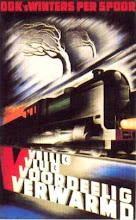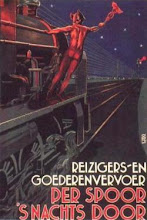
A few months ago, I found a Lionel 259E engine in relative poor condition on Ebay. Precisely good for Lionel's junkyard. When it arrived two things were crystal clear: 1 much work would be necessary to get this engine running again and 2 what a beautiful detail this engine has. Basically the engine block and the drivers were covered with rust, dust and hardened grease. The boiler front was bent and the rear truck was missing. When placed on tracks it didn't move an milliinch and only made some rumbles and noices.
Yesterday, I disassembled the engine and cleaned the engine. First, with a cloth and toluene / white spirits to remove the black tacky hardened grease and then with a brass brush to remove the residue. Oh boy, my hands were black! The brushes are relatively thick and have a scratched surface. I sanded them gently and placed them back for the moment. Eventually they need to be replaced. The armature was cleaned and then everything was lubed again. I placed a LED light bulb in the socket and that lighthed directly, but the engine did not do a thing. The wires are in poor condition. They are old cotton covered and this crumbles when you touch them. For the moment I protected a few open spots with insulation tape, but it is clear that I need to get the soldering gun ready for rewiring. Then I focussed on the E-unit. I unscrewed it and dust fell out. After light shaking two small corroded copper rings fell out. The drum had been fully disintegrated! No wonder that the engine did not move. I cleaned the E-unit out and found that the plunger was stuck. After more cleaning and lubing it started to move again. Next, I placed a new drum in the E-unit and worked a little more on getting the plunger falling freely down again and yes the engine runs again!

It is a relief and a feeling of satisfaction in one. The engine has made many loops already on my layout and the E-unit is still not 100% OK ( a few times forward motion is passed), but it runs and runs good. Surprisingly, relatively high voltages are needed to get her moving, but then she runs smoothly. This high initial electric potential could be related to the poor brushes. Next the rewiring needs to be done and after that the engine need a rear truck and a good derusting treatment. Priming and repainting will be necessary and since many of the brass pieces lost their luster, these need to be polished or replaced as well.
Papa-Les-Trains placed some really nice photo's of a restored 259E on the web and I do not think I will get it so far, but I will try to bring her close. It just will take a few months.











